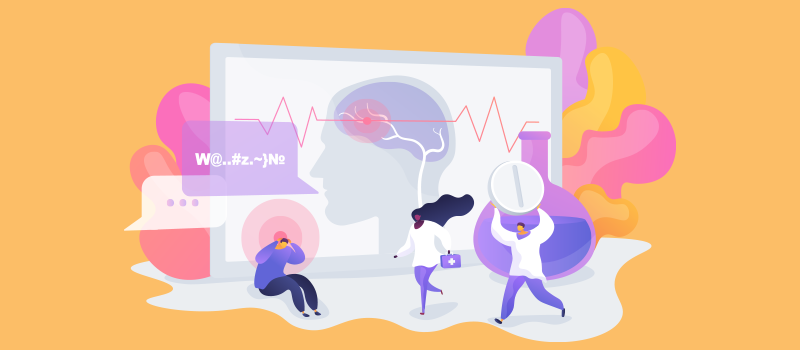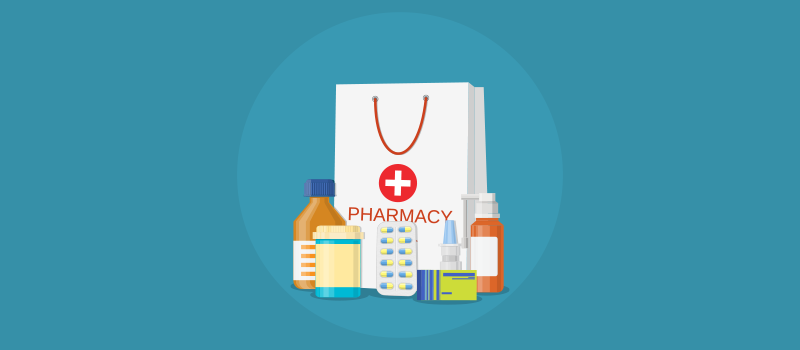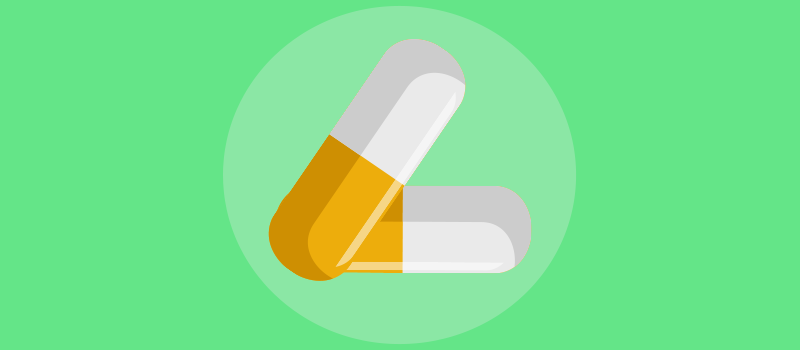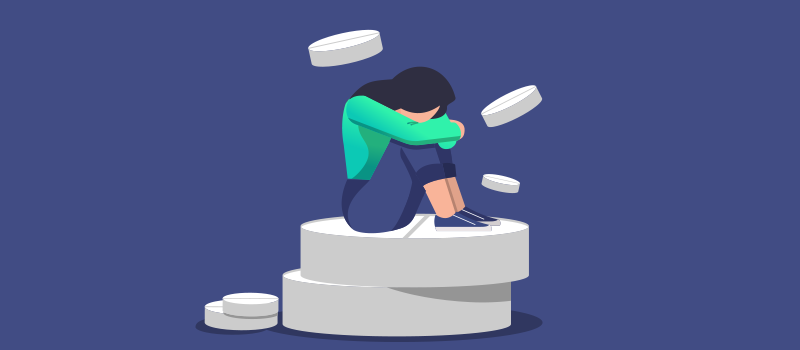What’s the Buzz
The Bee Healthy Blog
Best Seizure Medication With the Least Side Effects

Epilepsy is a common neurological disorder that affects some 3 million adults and nearly 500,000 children in the U.S. This is a condition characterized by recurrent episodes of seizures or convulsions due to abnormal electrical activity in the brain tissue. While it is not possible to cure epilepsy, the appropriate treatment can make a huge difference in a person’s quality of life and reduce the risk of prolonged seizures, brain damage, and death.
Whether you have newly diagnosed epilepsy or you have been living with the condition for a while, this article will tell you about some of the common seizure medications that your doctor may use to treat epilepsy.
What is the drug of choice for epilepsy?
No single antiepileptic drug (AED) is better than the others to treat or prevent seizures. Doctors choose a particular seizure medicine for a specific patient after taking into account various factors such as the type of seizures, seizure frequency, side effects of different antiepileptic drugs, the convenience of use, cost (availability of generic substitution), in addition to the patient’s and physician’s previous experience with other seizure medications. Antiepileptic drugs may also be chosen based on the patient's age (side effects can be more severe in elderly patients) or based on a person’s medical history.
One of the key factors in choosing antiepileptic drugs is seizure type. Some antiepileptic drugs are narrow-spectrum AEDs, meaning they are primarily effective against specific types of seizures, such as absence seizures or petit mal seizures, generalized tonic-clonic seizures (also known as grand mal seizures), focal seizures, and partial-onset seizures. Broad-spectrum antiepileptic drugs are effective against a wide range of seizure types.
Certain medications are approved as monotherapy (to be used alone), while others are used as adjunctive therapy (add-on treatment) with other antiepileptic drugs. It is worth noting that people with refractory epilepsy are more challenging to treat. Refractory epilepsy is drug-resistant and may require a more complex treatment approach.
What are some common antiepileptic drugs?
Phenobarbital (Luminal)
This is one of the oldest central nervous system drugs used to control seizures. It is effective and inexpensive. Phenobarbital works by increasing GABA activity in the brain (GABA is an inhibitory neurotransmitter that reduces brain activity). Possible side effects include sedation, impaired concentration, depression, and barbiturate withdrawal. Long-term use of phenobarbital can cause weak bones.
Phenytoin (Dilantin)
Phenytoin is one of the most common and inexpensive antiseizure medications prescribed by physicians. Common side effects of phenytoin are drowsiness, confusion, and problems with balance coordination. Long-term use can lead to osteoporosis (weak bones) and cosmetic concerns like skin problems and hair growth on the face or body. Some people can develop a rash on phenytoin, including the dangerous Stevens-Johnson syndrome in rare cases.
Valproic acid (Depakene, Depakote)
This is a broad-spectrum antiepileptic drug that can help control seizure activity in various seizure types. It is the most effective medication for generalized seizures. Possible side effects include hair loss, weight gain, tremors, stomach upset, low blood counts, liver or pancreatic injury, and weak bones. Valproate is contraindicated during pregnancy as it can cause birth defects.
Topiramate (Topamax)
This is another broad-spectrum AED that works against all types of seizures. Common side effects of topiramate include dizziness, problems with memory or speech, weight loss, kidney stones, and eye problems including very rare cases of glaucoma (increased eye pressure).
Zonisamide (Zonegran)
This antiepileptic drug is similar in effectiveness and side effects to topiramate. Some people tolerate zonisamide better with less cognitive impairment than topiramate.
Lamotrigine (Lamictal)
This is a broad-spectrum AED that is relatively well tolerated. However, it may not be as effective for myoclonic seizures. Common side effects of lamotrigine are headache, dizziness, blurred vision, and sleep problems. A rash is another possible side effect, especially if the patient is also taking other AEDs such as divalproex sodium or valproic acid. This rash usually goes away on its own once the medication is discontinued. However, in some people, the rash becomes serious or even life-threatening. Patients should report the first sign of any skin reaction to their healthcare providers immediately.
Levetiracetam (Keppra)
This is one of the most commonly prescribed anti-seizure drugs because it is effective against many seizure types and has a relatively low risk of causing cognitive (thinking) side effects. Common side effects of levetiracetam include fatigue, dizziness, insomnia, and mood changes.
Carbamazepine (Tegretol, Carbatrol)
This medication is used to treat partial seizures. Long-acting formulations such as Tegretol-XR or Carbatrol are available for once-daily dosing. It works by affecting sodium channels in the brain cells. Side effects can include stomach upset, weight gain, blurred vision, low blood counts, low blood sodium. Though very rare, Stevens-Johnson syndrome, a severe skin reaction, can happen in some patients.
Oxcarbazepine (Trileptal)
This medication is similar to carbamazepine. It is equally effective with perhaps fewer side effects. However, it has a higher risk for low blood sodium than carbamazepine.
Clonazepam (Klonopin)
This medication is a long-acting benzodiazepine, the same drug class as diazepam (Valium) and alprazolam (Xanax). Benzodiazepines work as anti-seizure drugs by increasing GABA effectiveness. GABA is the brain chemical responsible for a calming, relaxing mood. Side effects of clonazepam can include sedation, coordination problems, mood changes, and dependence after prolonged use.
Lorazepam (Ativan)
Lorazepam is also a benzodiazepine like clonazepam. However, it is shorter acting and works quickly, with the effects lasting for 2-6 hours. Therefore, lorazepam is used as a “rescue medication” in people who experience frequent seizure clusters.
Gabapentin (Neurontin)
Gabapentin is one of the safest antiepileptic drugs, but it may not be as powerful as other seizure medications, especially if prescribed at a low dose. Possible side effects of gabapentin are fatigue, dizziness, unsteadiness, and weight gain. Gabapentin is also sometimes prescribed to treat pain, seizures, and pain for dogs and cats.
Pregabalin (Lyrica)
This medication is similar to gabapentin in terms of side effects, but it may be more effective against seizures.
Rufinamide (Banzel)
This medication is approved as an adjunctive treatment for Lennox-Gastaut syndrome (LGS) in adults and children over age 4. This syndrome is associated with various seizure types, such as tonic seizures (stiffening), myoclonic seizures (brief jerking), atonic seizures (drop), staring seizures (absence), and partial seizures. Common side effects of rufinamide include fatigue, dizziness, headache, drowsiness, double vision, and trembling. People with a rare heart rhythm abnormality called short QT syndrome should not take this medication.
Lacosamide (Vimpat)
This is a relatively new antiepileptic drug. It is used to treat partial seizures and secondarily generalized seizures. Possible side effects of lacosamide include dizziness, headache, fatigue, nausea, vomiting, double vision, memory problems, and mood changes.
Vigabatrin (Sabril)
Vigabatrin is effective against partial seizures with or without secondary generalization when partial seizures spread to both sides of the brain. It is also used to treat infantile spasms, a serious seizure disorder in young children. Adverse events include toxicity to the retina in the eye with long-term use, leading to permanent peripheral vision loss. People who take this drug must undergo regular vision testing.
Other Seizure Medications
Other drugs used to treat seizures include diazepam rectal gel (Diastat), acetazolamide (Diamox), felbamate (Felbatol), ethosuximide (Zarontin), tiagabine (Gabitril), and primidone (Mysoline).
What factors affect the side effects of seizure medications?
According to the National Epilepsy Foundation, one of the key factors determining the severity of side effects from seizure medications is the starting dose of the drug. In other words, the side effects of medications used in epilepsy treatment can be dose-related. For this reason, many AEDs need to be started at low doses because high doses can cause severe side effects. Unfortunately, this can sometimes delay the treatment of seizures. Doctors use blood tests to check levels AEDs to tailor the dosage.
What is the safest drug for seizures?
Like all medications, seizure medications can cause various side effects and adverse events. In general, newer antiepileptic drugs (vigabatrin, topiramate, lamotrigine, levetiracetam, rufinamide, lacosamide, pregabalin, and others) are both safer and better tolerated than some of the older AEDs (phenobarbital, phenytoin, valproic acid, carbamazepine).
What is the newest seizure medication?
Two new antiepileptic drugs are cenobamate (Xcopri) and fenfluramine (Fintepla). Cenobamate is effective against partial seizures and has the advantage of once-daily dosing. Its adverse effects are similar to other AEDs.
The FDA approved fenfluramine (Fintepla) in 2020 to treat seizures associated with Dravet syndrome in children 2 years and older. Fenfluramine is the "Fen" in the weight loss drug Fen-Phen that made news in the 1990s and was discontinued due to serious side effects. Therefore, patients taking fenfluramine for seizure control must be closely monitored.
Two new intranasal rescue medications for seizures are also available: diazepam (Valtoco) and midazolam (Nayzilam). These nasal sprays don’t need to be refrigerated, so they can be used outside the home. Also, these intranasal anti-seizure rescue medications offer greater convenience of use over older preparations such as rectal diazepam and clonazepam disintegrating tablets.
Last but not least, cannabidiol (Epidiolex), which is derived from marijuana, has been approved to treat certain types of epilepsy such as Lennox-Gastaut syndrome, Dravet syndrome, and refractory (drug-resistant) epilepsy.
Wrapping Up
There are many antiseizure drugs available. You should know that your doctor may not start you on treatment after an isolated seizure incident. When you do start treatment, finding the best medication for epilepsy can be challenging. You may have to try several medications before finding the one that works. The goal of epilepsy treatment is always to find the best possible treatment approach that can stop breakthrough seizures while causing the fewest side effects. However, remember that for antiepileptic drugs to be effective, you have to take them exactly as prescribed on schedule. Also, remember that AEDs are not a cure for epilepsy; they only work to suppress seizures when they are present in your body.
References:











SOCIAL